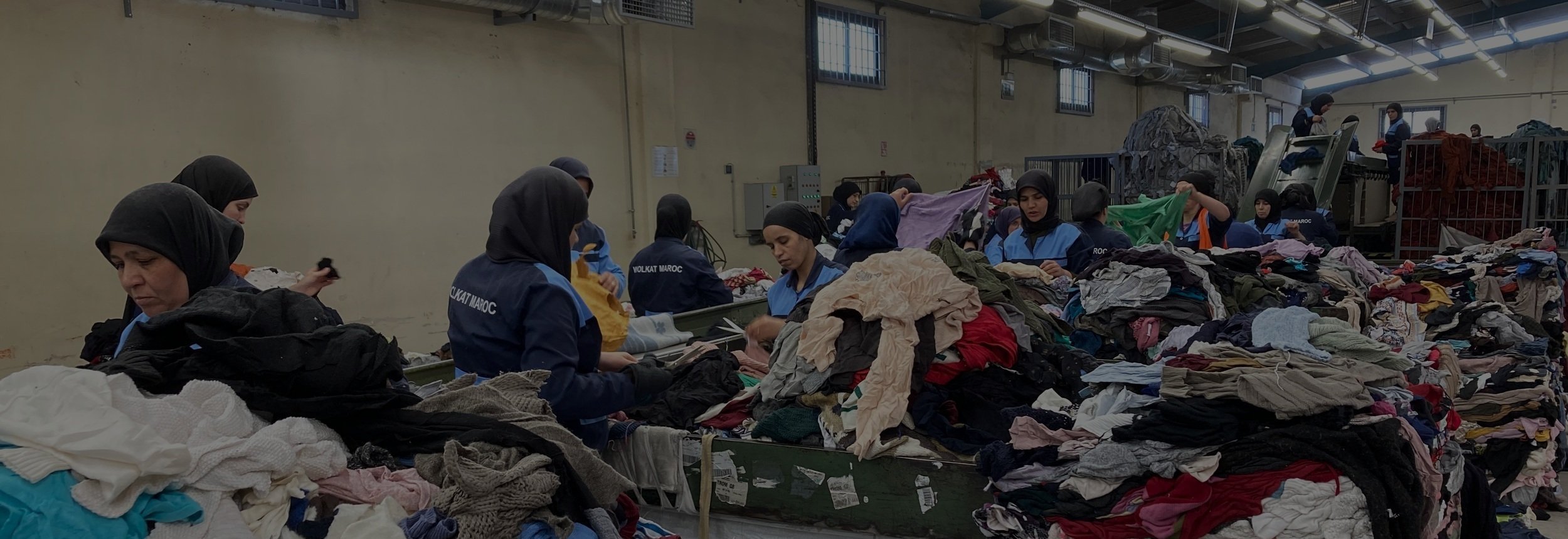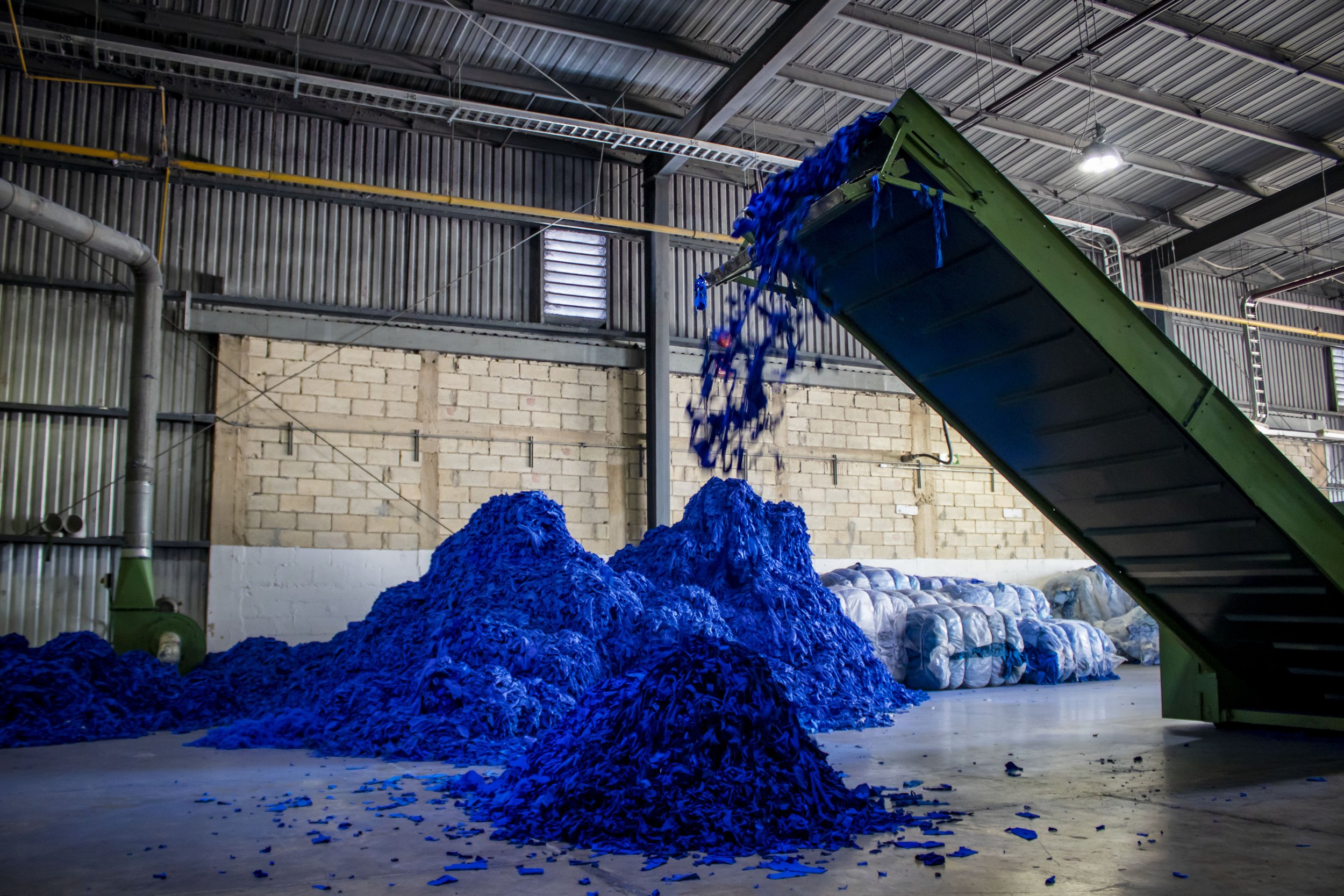
REGULATORY LANDSCAPE
As of August 2024
Overall, the global trend is towards greater responsibility for textile producers and increased efforts to reduce textile waste through recycling and reuse. The specific regulations vary across countries, but the overarching goal is to create a more sustainable and circular textile industry.
United States
As of August 2024, the US does not have any overarching federal regulations mandating textile recycling, reuse, or producer responsibility. However, several states and local governments have taken initiatives, and there's growing momentum towards more comprehensive legislation:
State and Local Initiatives
Massachusetts Textile Waste Ban (2025)
Bans the disposal of most textiles in landfills and incinerators, requiring businesses and residents to find reuse and recycling options.
New York's Textile Reuse and Recycling Act
Requires certain clothing and textile product producers to establish collection and recycling programs.
California's SB 707 (Pending)
Proposes an Extended Producer Responsibility (EPR) program for apparel and footwear, making producers responsible for end-of-life management.
Proposed Federal Legislation
The Responsible Textile Recovery Act of 2023
Aims to establish a national EPR framework for textiles, holding producers accountable for recycling and reuse.
The Americas Act
Includes incentives for textile recycling and circularity within the broader context of reshoring manufacturing from China.
The FABRIC Act
Focuses on improving labor conditions in the garment industry but indirectly incentivizes domestic manufacturing, which could boost local textile recycling infrastructure.
Overall Situation in the United States
No federal mandate
The US currently lacks a unified federal policy on textile recycling and producer responsibility.
Growing state-level action
Several states are leading the way with bans on textile disposal and EPR initiatives.
Momentum for federal legislation
Multiple proposed bills indicate growing interest in addressing textile waste at the national level.
Key Points
The regulatory landscape is evolving rapidly.
There is increasing pressure on producers to take responsibility for their products' end-of-life.
The focus is shifting towards circularity, emphasizing reuse and recycling over disposal.
European Union
Currently, and leading up to 2025, the EU is undergoing a significant shift in its textile collection rules, primarily aimed at fostering a more circular economy and reducing textile waste.
Current Situation in EU
Waste Framework Directive (WFD)
The WFD has been amended to include provisions for separate textile waste collection.
COM (2023) 420 final - EUR-Lex - European Union
eur-lex.europa.eu
EU: 2025 and Beyond
Mandatory Separate Collection
By January 1, 2025, all EU Member States must implement systems for the separate collection of textile waste. This means textiles will need to be collected separately from other waste streams to enable better sorting, reuse, and recycling.
Extended Producer Responsibility (EPR)
EPR schemes will be established, making producers financially responsible for the collection, sorting, and recycling of textile waste. This incentivizes them to design products that are easier to recycle and reuse.
Circular economy for textiles - European Commission
ec.europa.eu
Extended Producer Responsibility: A path towards sustainable production and consumption
Eco-modulation of Fees
The fees producers pay into EPR schemes will be adjusted based on the environmental performance of their textiles. This encourages the use of sustainable materials and design practices.
Circular economy for textiles - European Commission
ec.europa.eu
What is Ecomodulation? Boosting Extended Producer Responsibility - Plastics Engineering
www.plasticsengineering.org
Overall Impact
These changes represent a major step forward in the EU's efforts to tackle textile waste and promote a more sustainable textile industry. They will likely lead to:
Increased textile recycling and reuse
Separate collection and EPR will make it easier to divert textile waste from landfills and incinerators, leading to more recycling and reuse.
Circular economy for textiles - European Commission
More sustainable textile design
Eco-modulation will encourage producers to design textiles that are more durable, repairable, and recyclable.
Reduced environmental impact of the textile industry
The overall environmental footprint of the textile industry is expected to decrease as a result of these changes.
Additional Points
The implementation of these rules may vary slightly between Member States.
The EU is also working on other initiatives to promote sustainable textiles, such as eco-design requirements and information disclosure obligations.
Other Countries
France
EPR for textiles has been in place since 2007, with producers financing collection and recycling systems.
Netherlands
Implemented an EPR scheme for textiles in 2023, setting targets for reuse and recycling.
Infographic: extended producer responsibility for textiles | Publication - Government.nl
Sweden
Has an EPR system for packaging that includes some textiles, and is considering expanding it.
United Kingdom
A consultation on EPR for textiles is underway, with potential implementation in the coming years.
Japan
Has a voluntary EPR system for apparel, with some brands participating.
Australia
Several states have bans on textile landfill disposal, and a national EPR scheme is being considered.
Key Trends
EPR is gaining traction
Many countries are adopting or exploring EPR as a way to hold producers accountable and incentivize sustainable practices.
Measuring the Benefits of Extended Producer Responsibility - Diversys
Separate collection is crucial
Separate collection of textile waste is becoming a standard requirement to enable effective sorting and recycling.
Focus on circularity
Regulations are increasingly promoting reuse and recycling over disposal, aiming for a circular economy.
Additional Points
Developing countries
Some countries are facing challenges with imported textile waste, leading to calls for stricter regulations on international trade.
Second-hand clothes from West pose environmental challenges in Africa – Experts
Consumer awareness
Raising consumer awareness about textile waste and recycling options is crucial for the success of these regulations.

